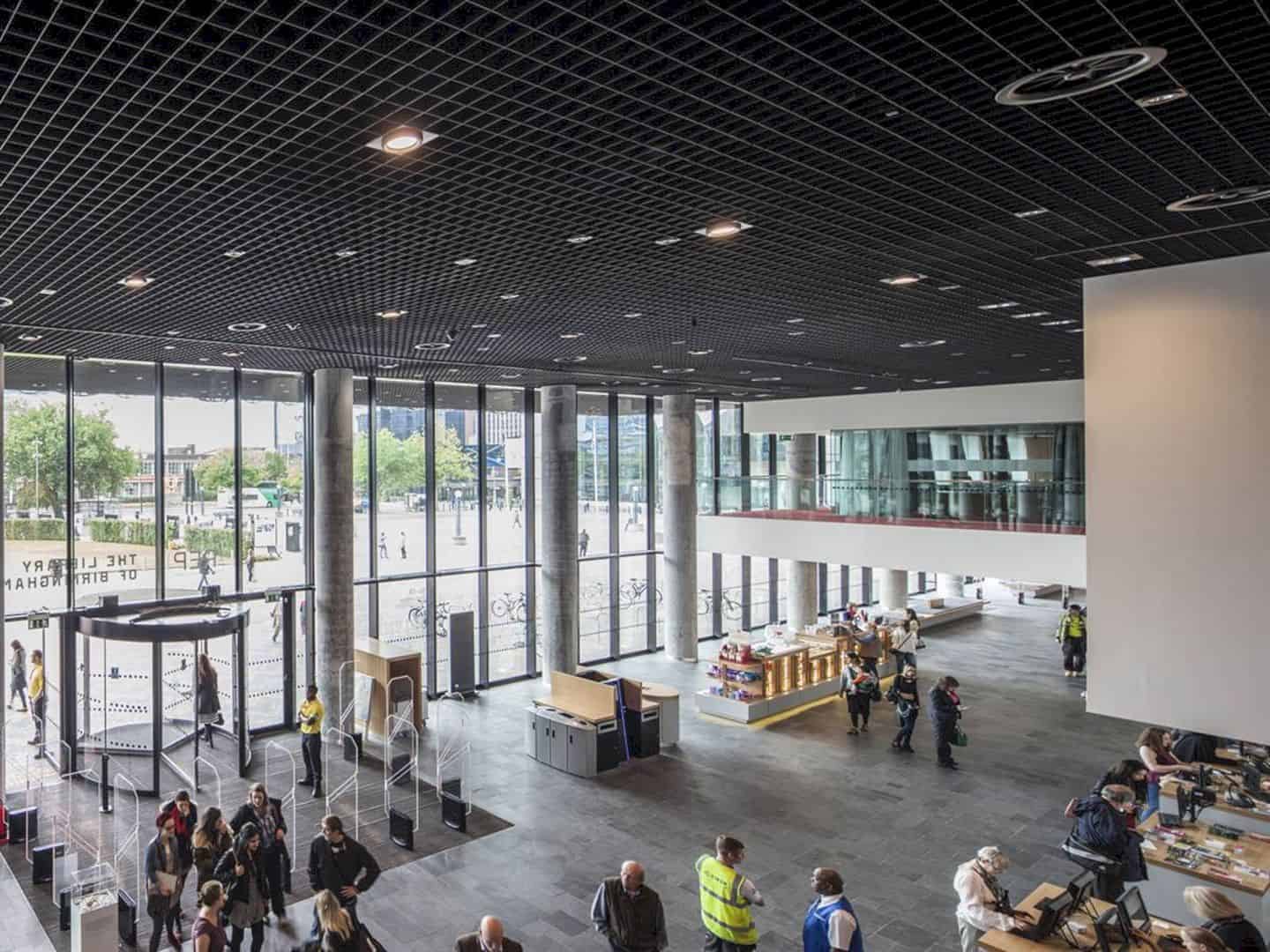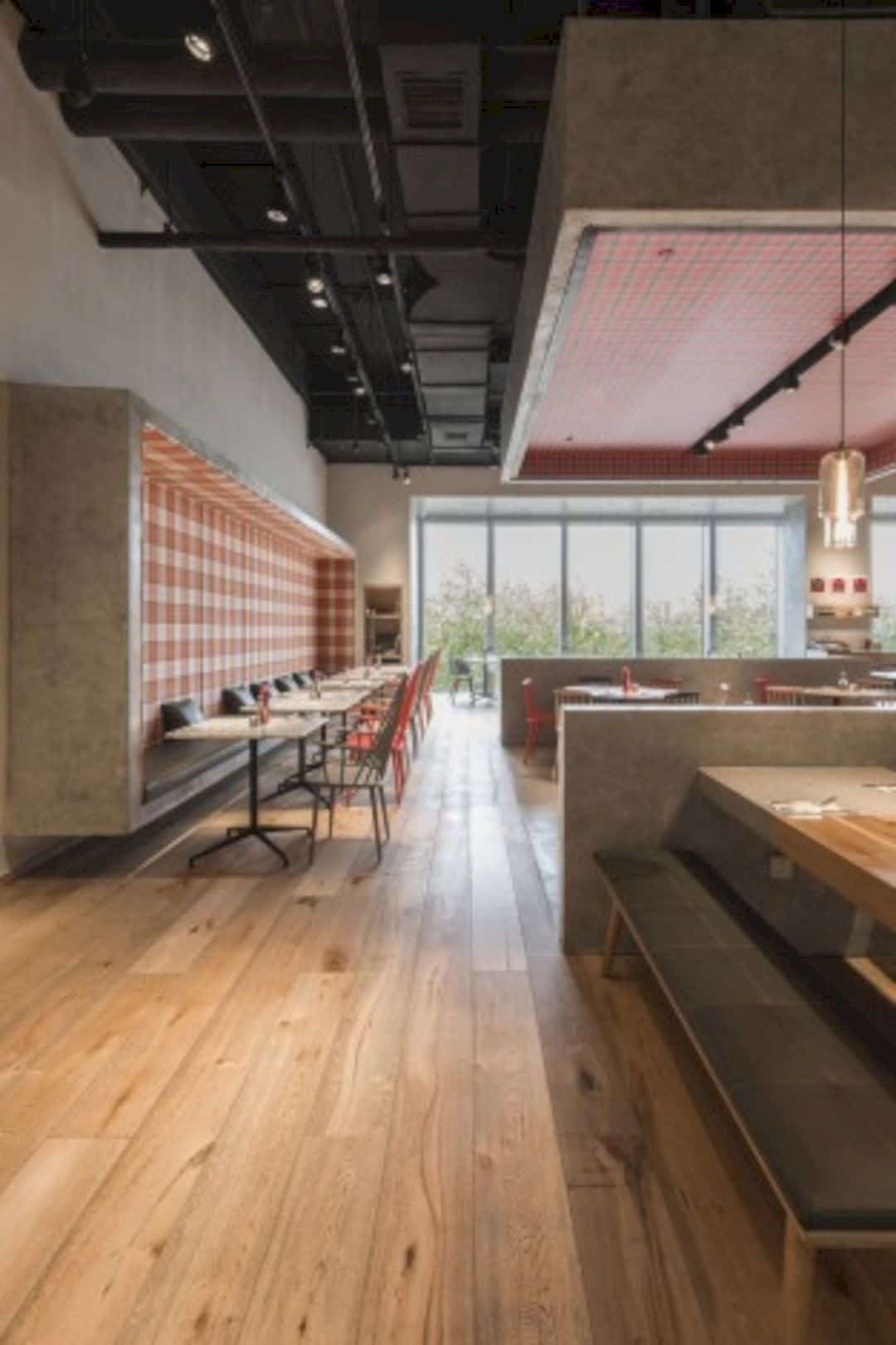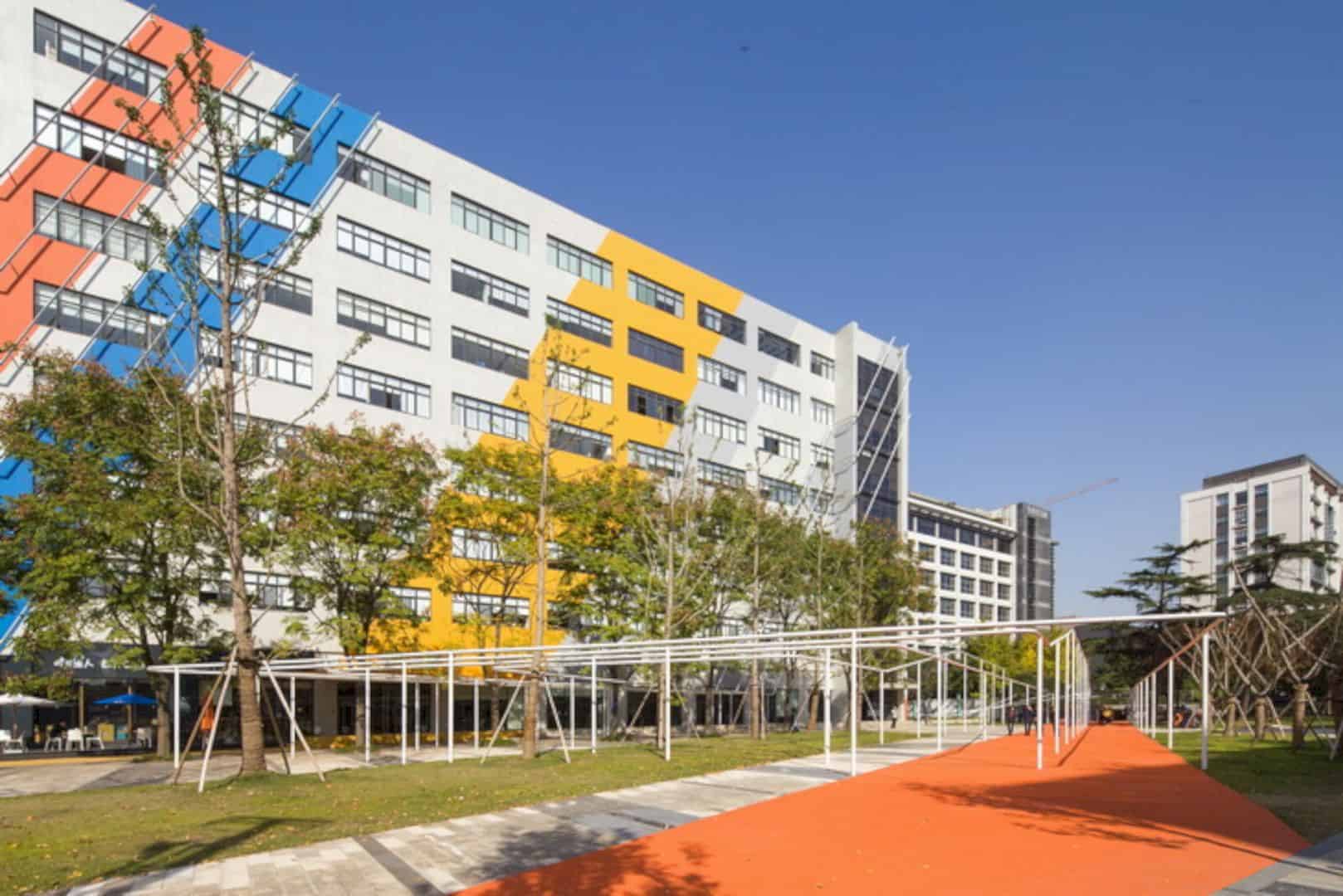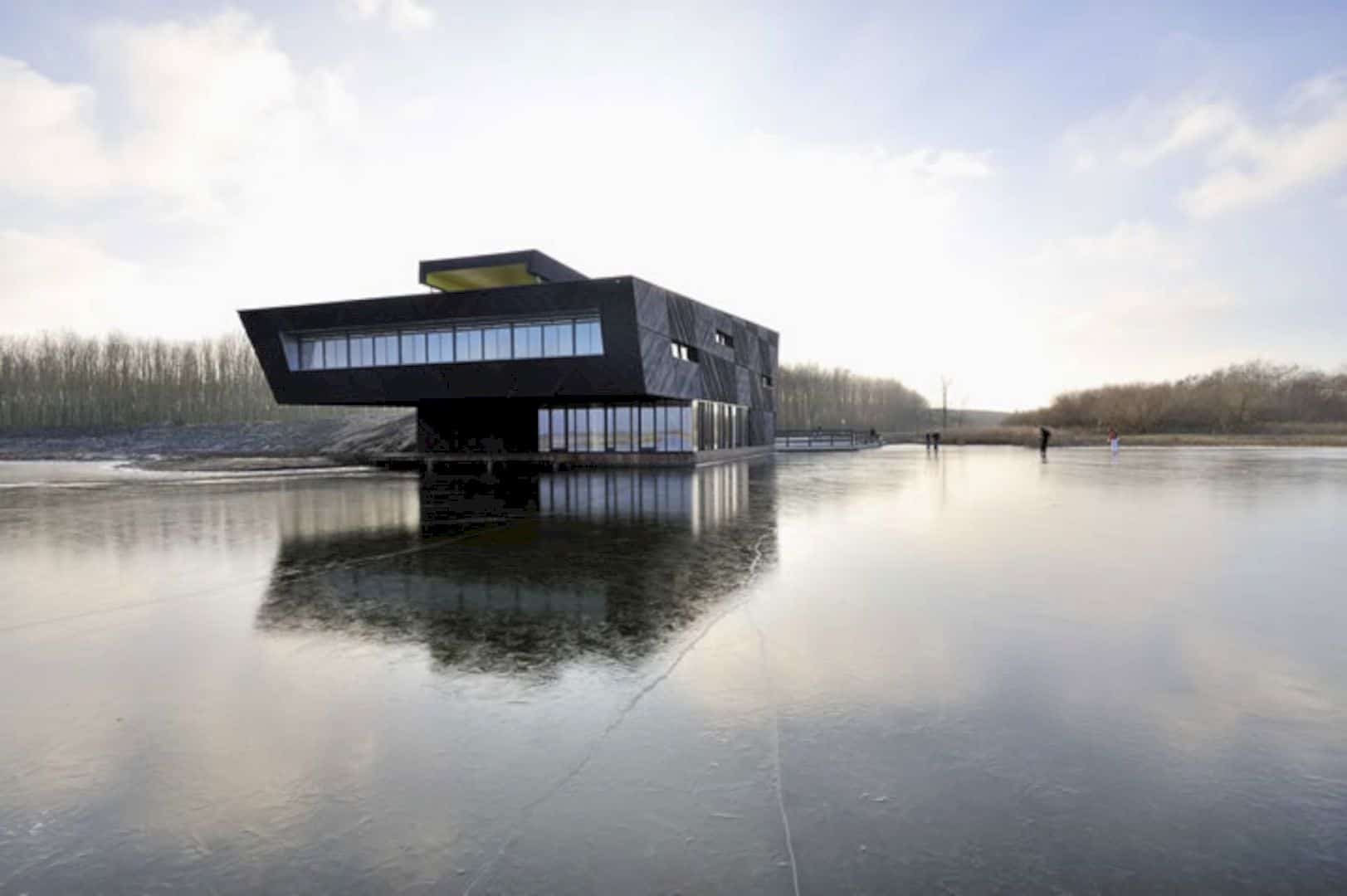The Library of Birmingham was designed by Mecanoo in Birmingham, United Kingdom. It is more than just a building, but a People’s Palace that is a center for information, culture, and learning that unites people of all ages and backgrounds.
The Library of Birmingham
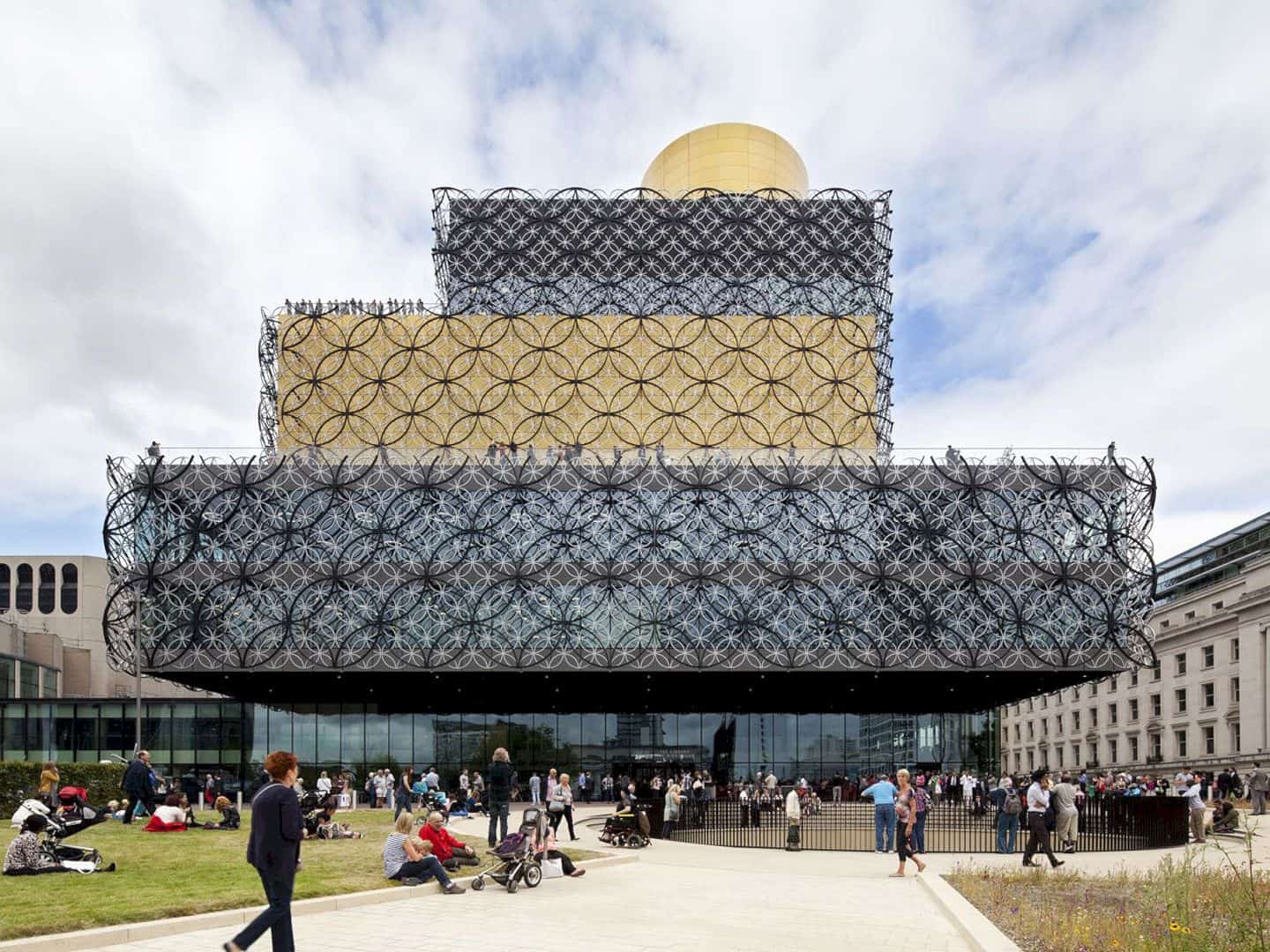
The Library of Birmingham is situated between the concrete Repertory Theatre [REP] from 1962 and the Baskerville House from 1936. The library was developed from the largest public square in the heart of the city with three distinct realms for entertainment, history, and culture. The design went toward the space of the street indoors.
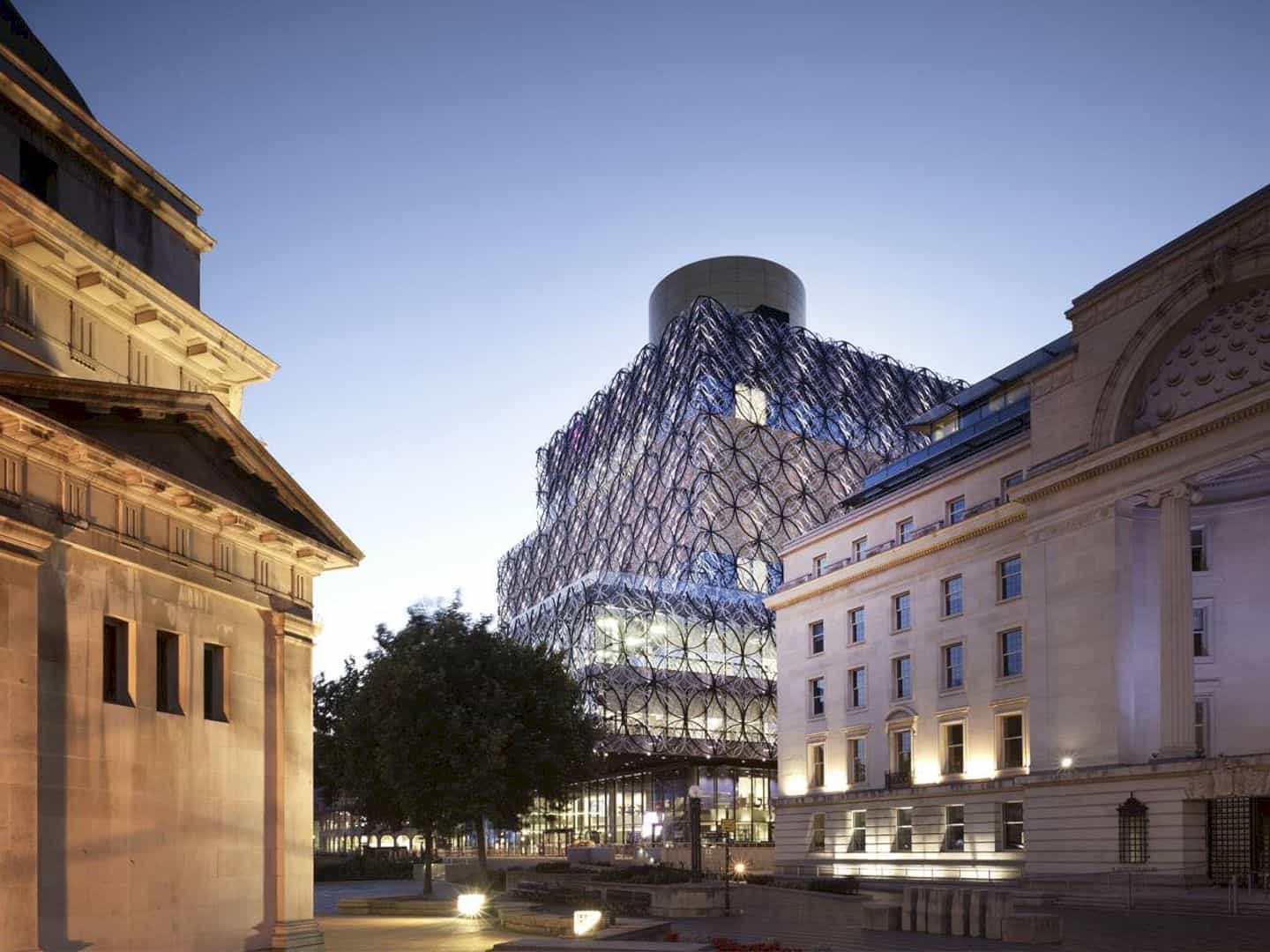
The building itself represents an ode to the circle; an archetypical form that embodies infinity, timelessness, universality, and unity. With the size of 35,000 m2, the library can facility more than 2.7 million visitors. It also possesses a BREEAM excellent rating.
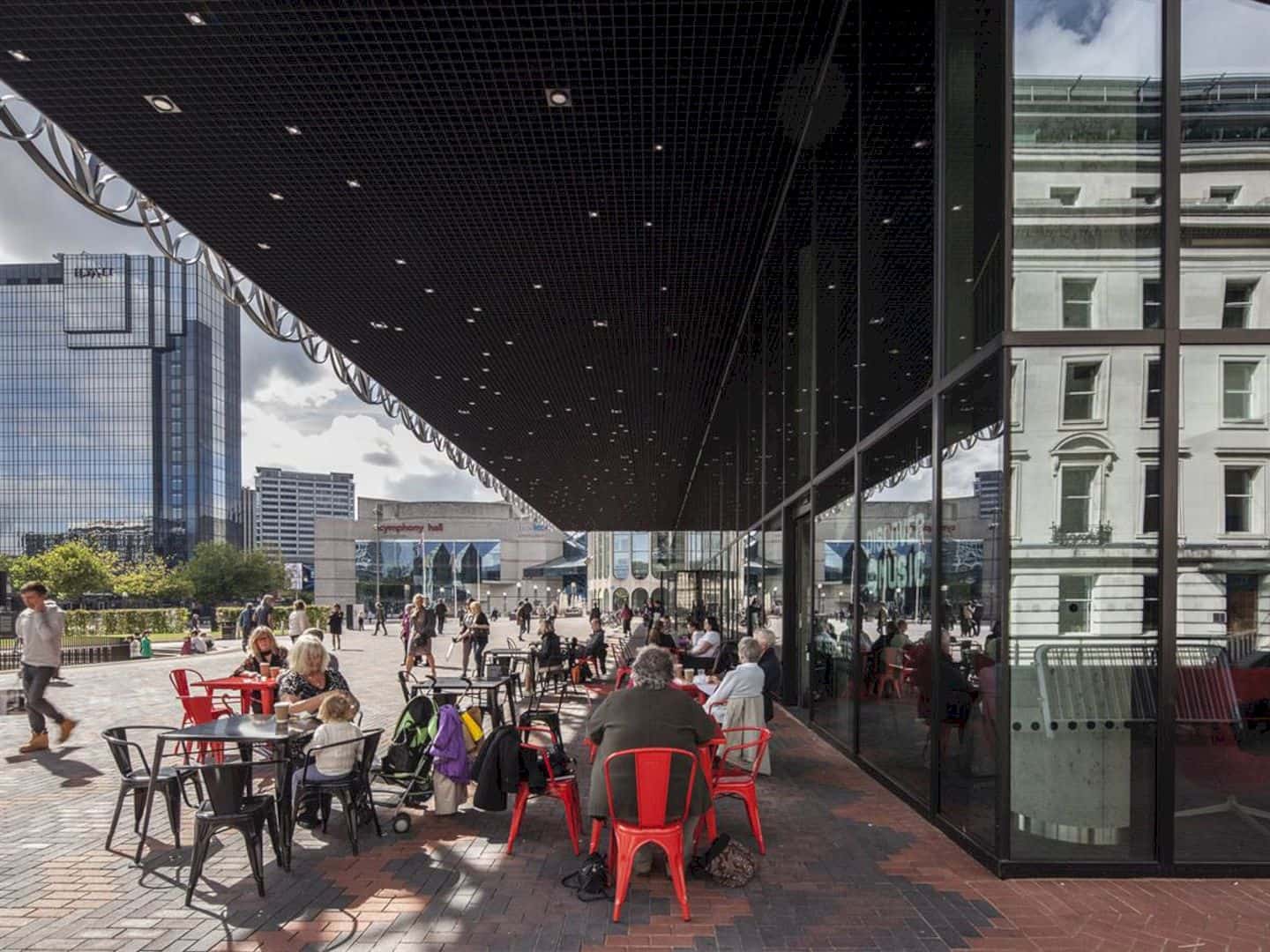
A cantilevered volume provides shelter at the entrance as well as acts as a grand balcony intact with a discovery garden.
Protected Outdoor Space
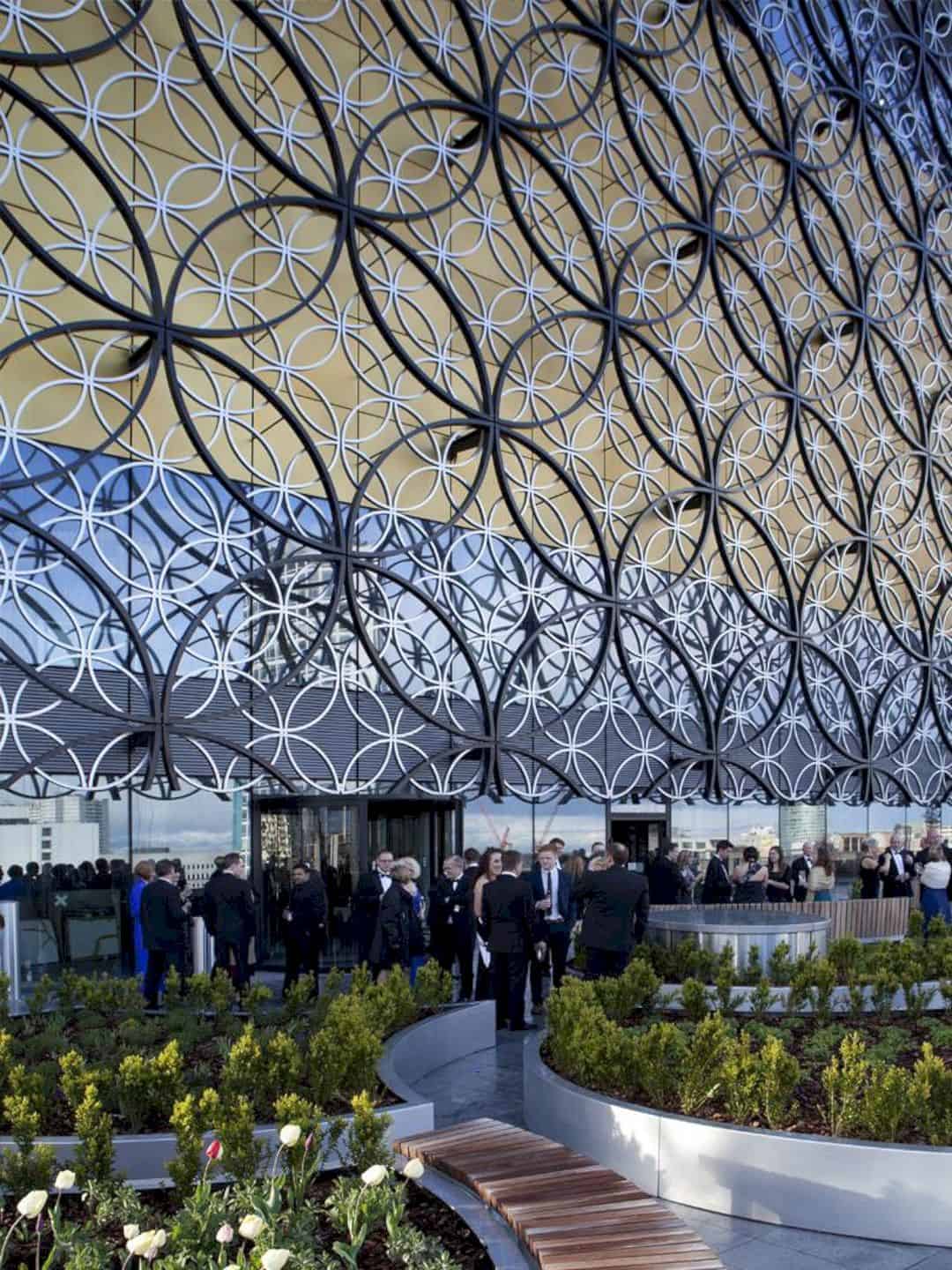
This Discovery Garden breaks up the square to form a protected outdoor space that will welcome daylight to penetrate deep into the building.
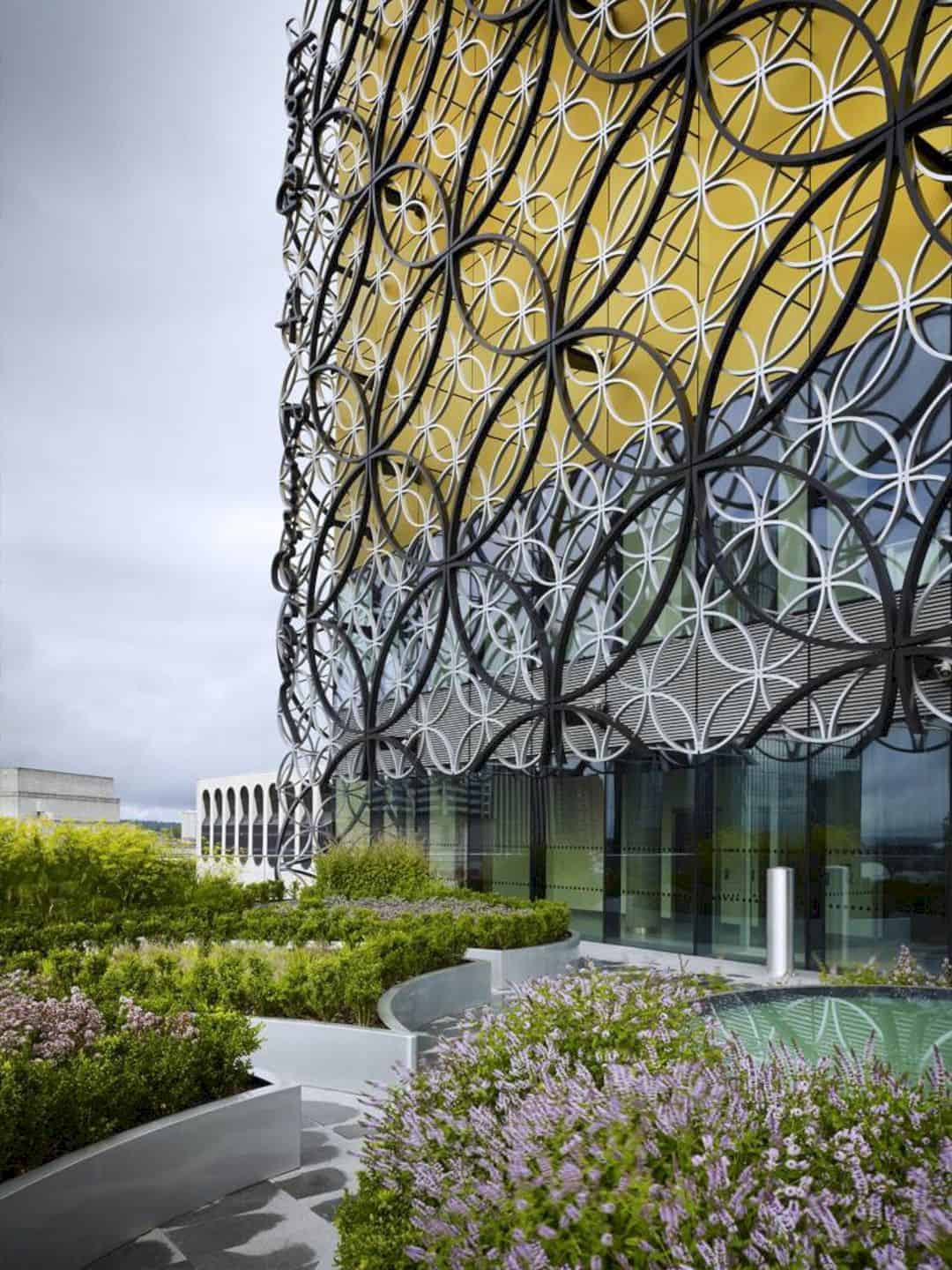
Overlooking the Centenary Square, the circular courtyard is considered as the most public of the three existing terraces.
The Inside
This is the entrance hall of the Library of Birmingham with grand interior design to accommodate over 2.7 million visitors.
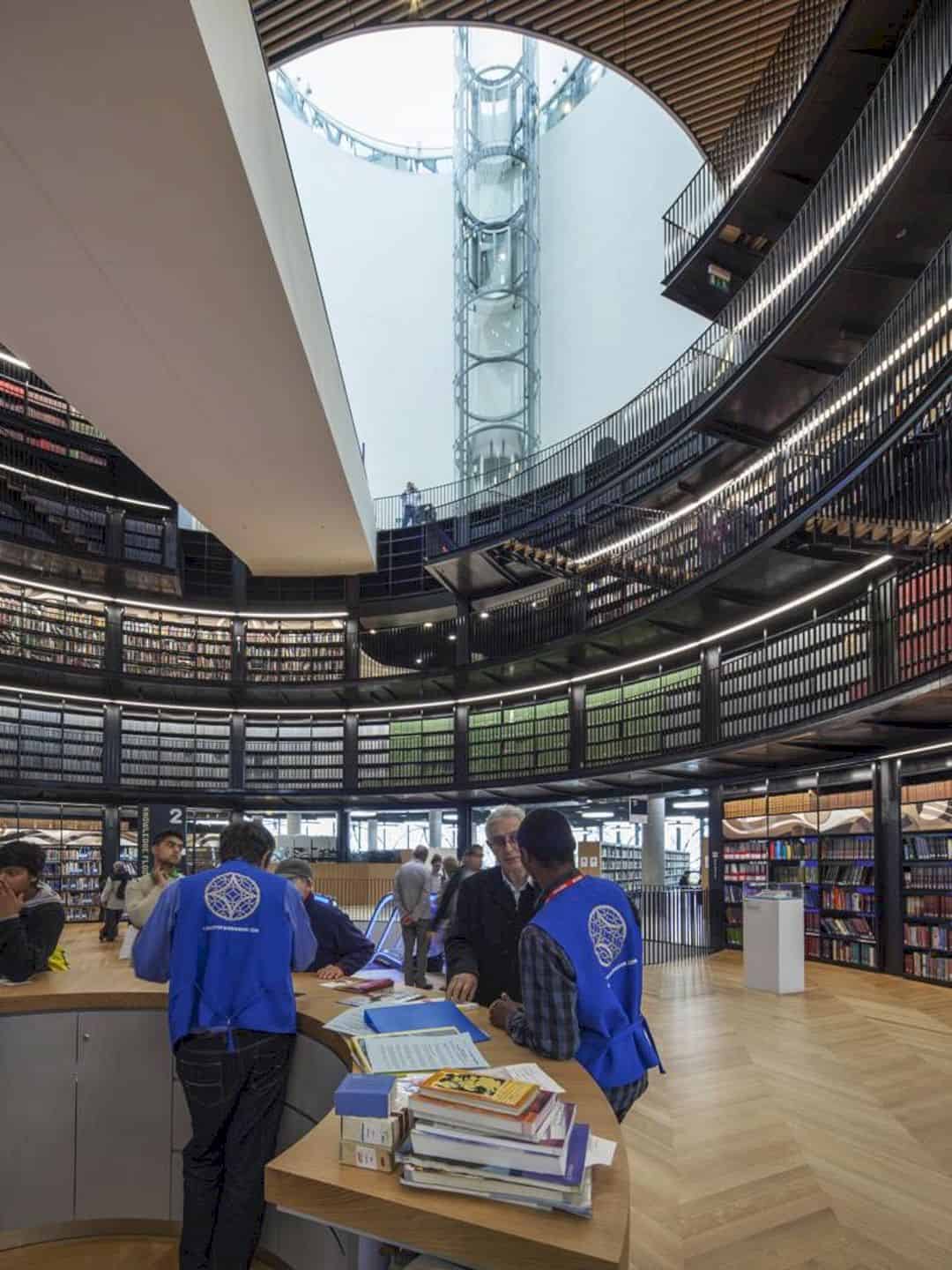
Visitors maneuvers from one floor to the next via interconnected and overlapping rotundas that offer ventilation and natural light. Ever-changing vistas are presented through the delicate filigree skin of interlocking circles inspired by the tradition of metalwork in Birmingham which is known as a former industrial city.
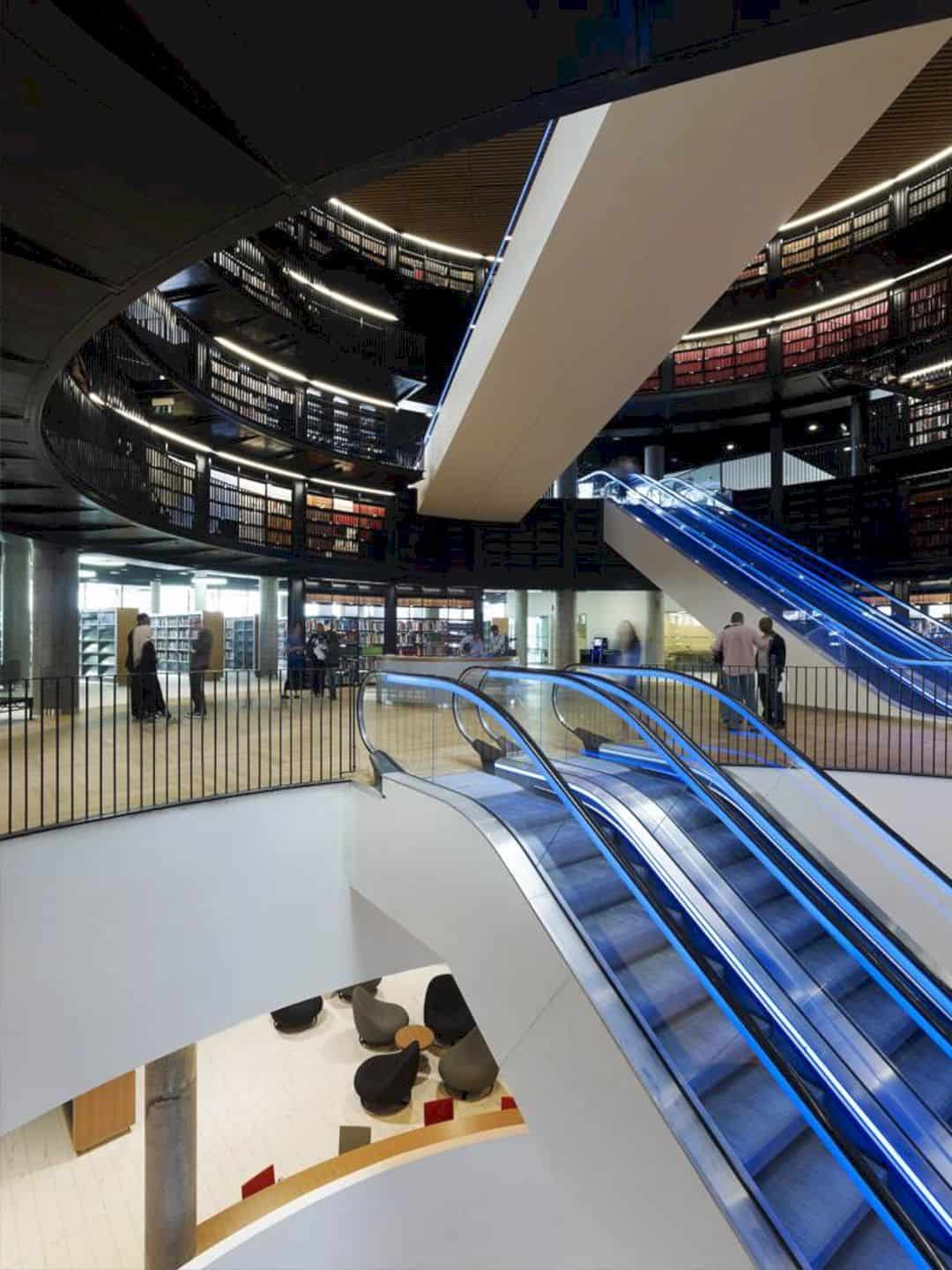
Escalators and elevators were placed dynamically in the central of the library to create connections between the eight circular spaces inside the building.

The main colors and materials used in the building are white ceramic flooring, gold, Mecanoo Blue, glass, metal, natural stone, oak, as well as fleeting shadows and circles.
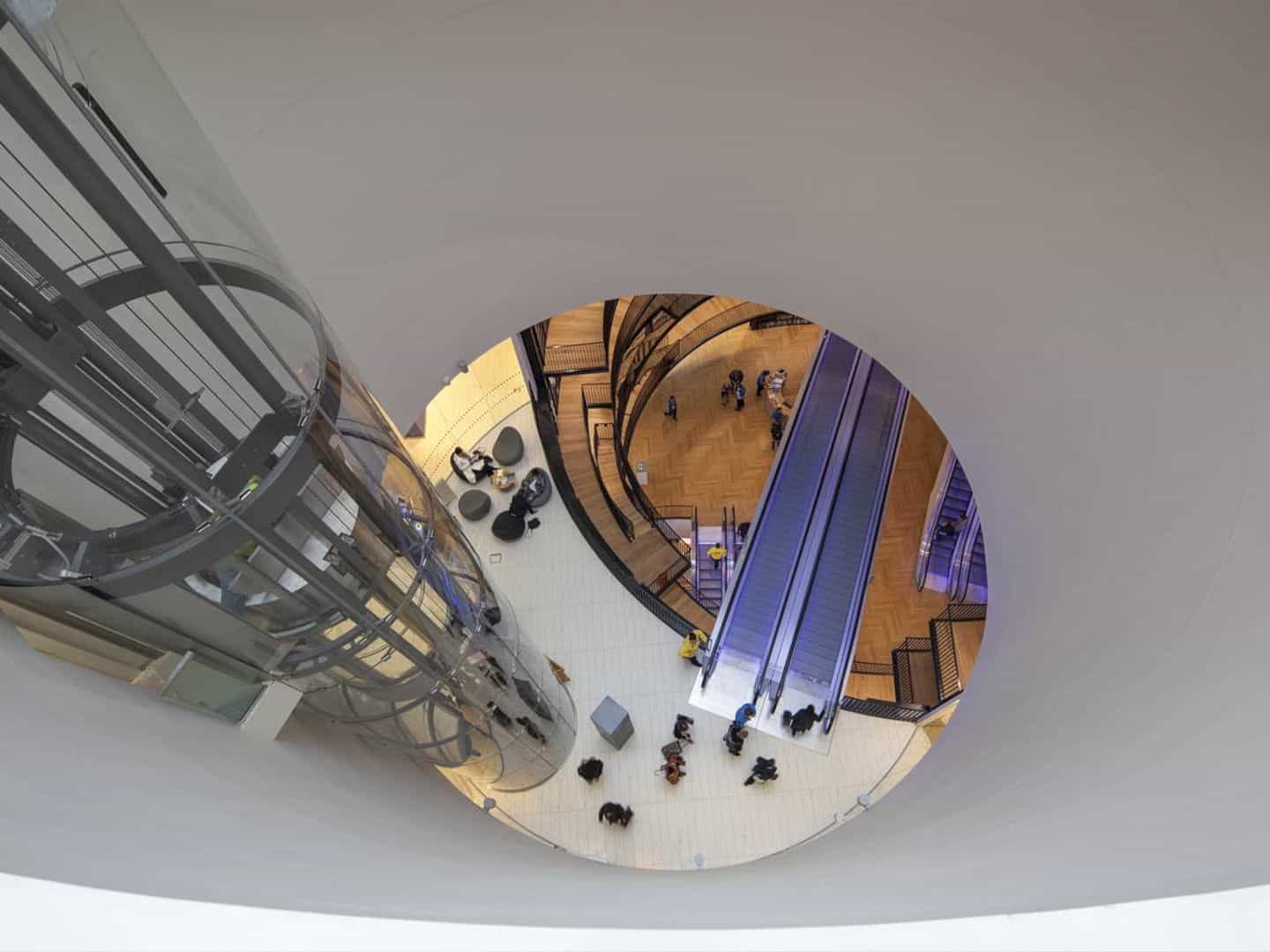
Visitors move via travelators through the Book Rotunda. If they want to access the Secret Garden, they can use a cylindrical lift.
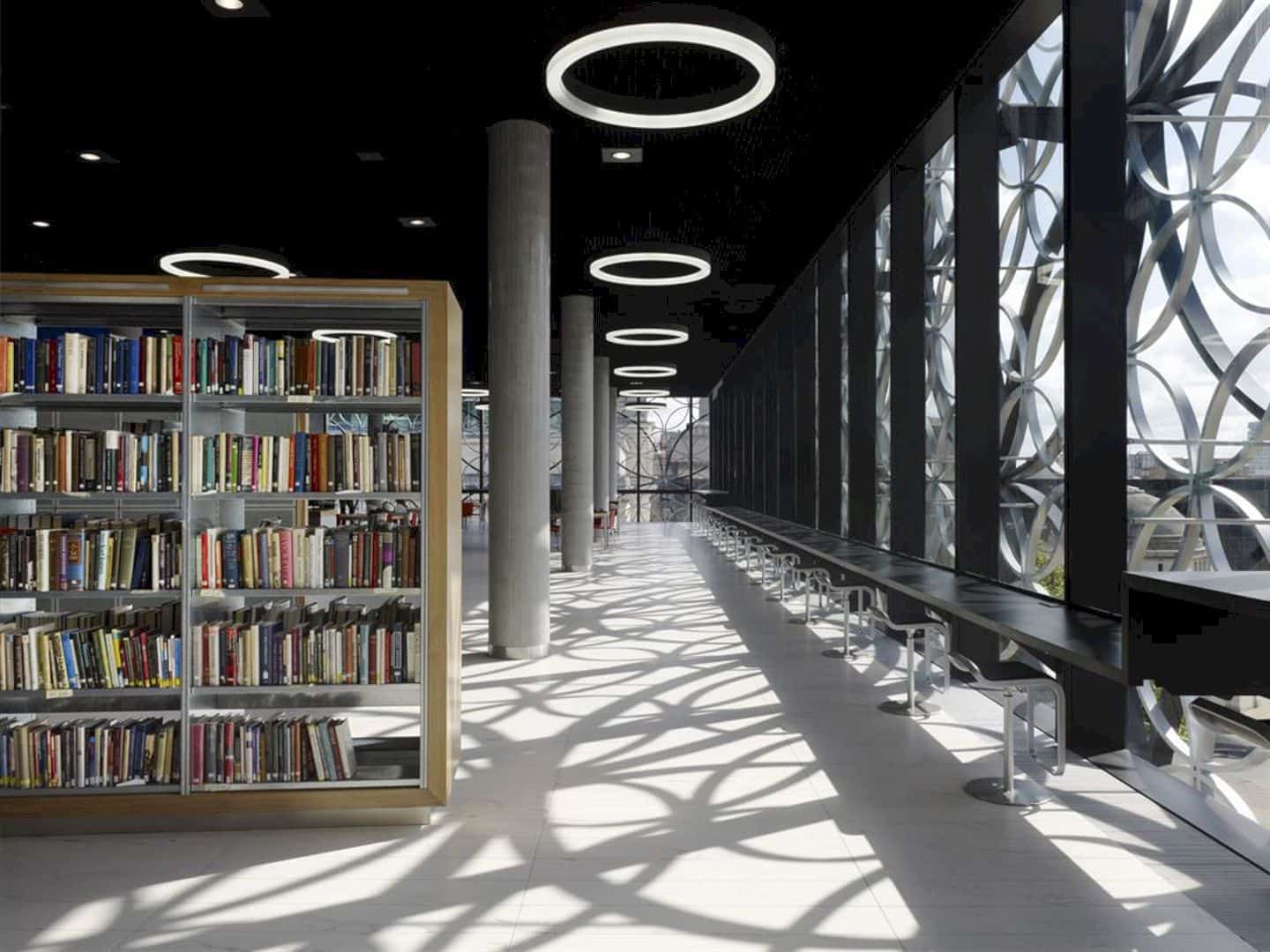
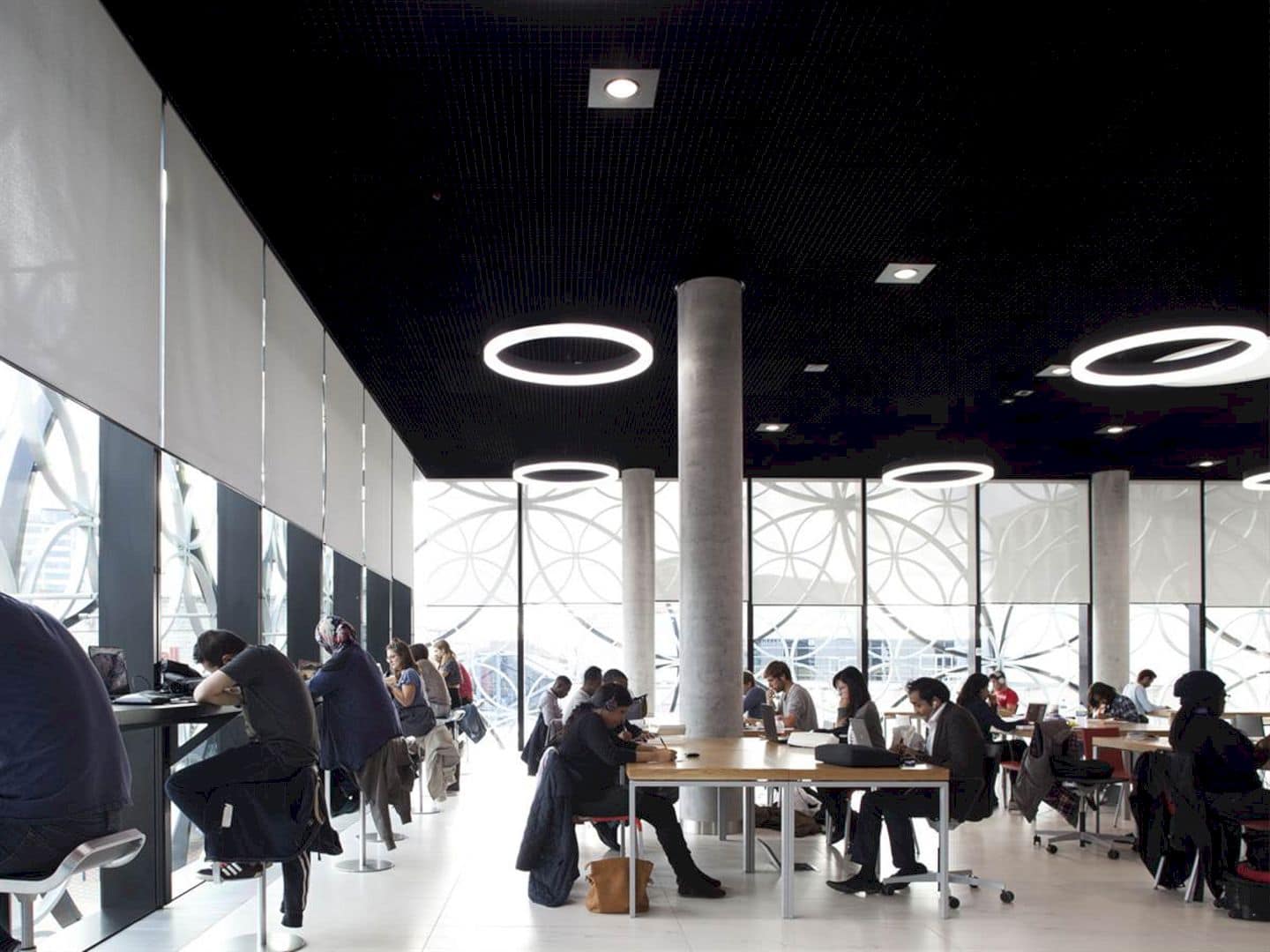
The repeating circles produce shadows and reflections in this particular space, offering a view of an unforgettable world within the building.
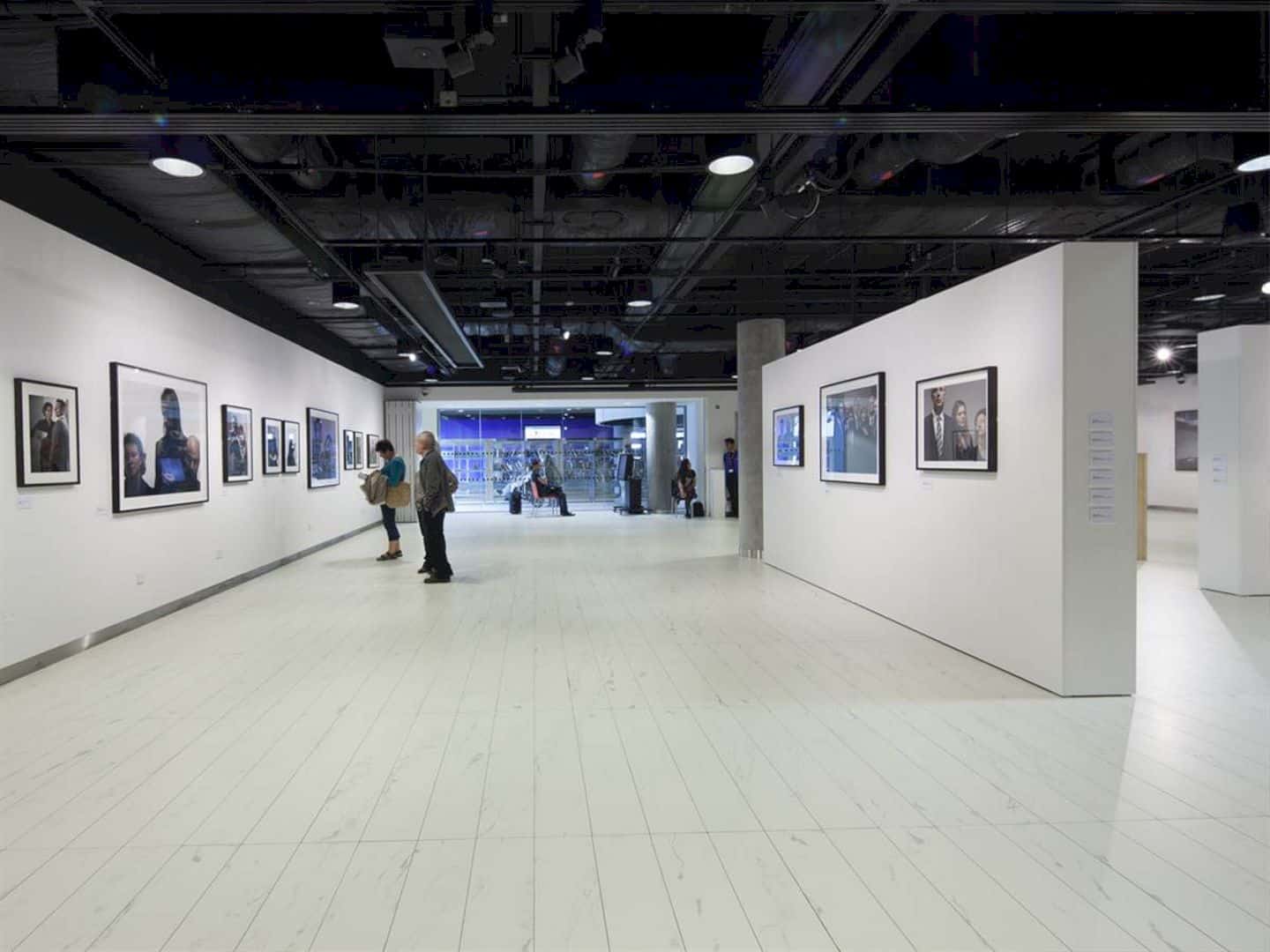
The library also comes with an exhibition space.
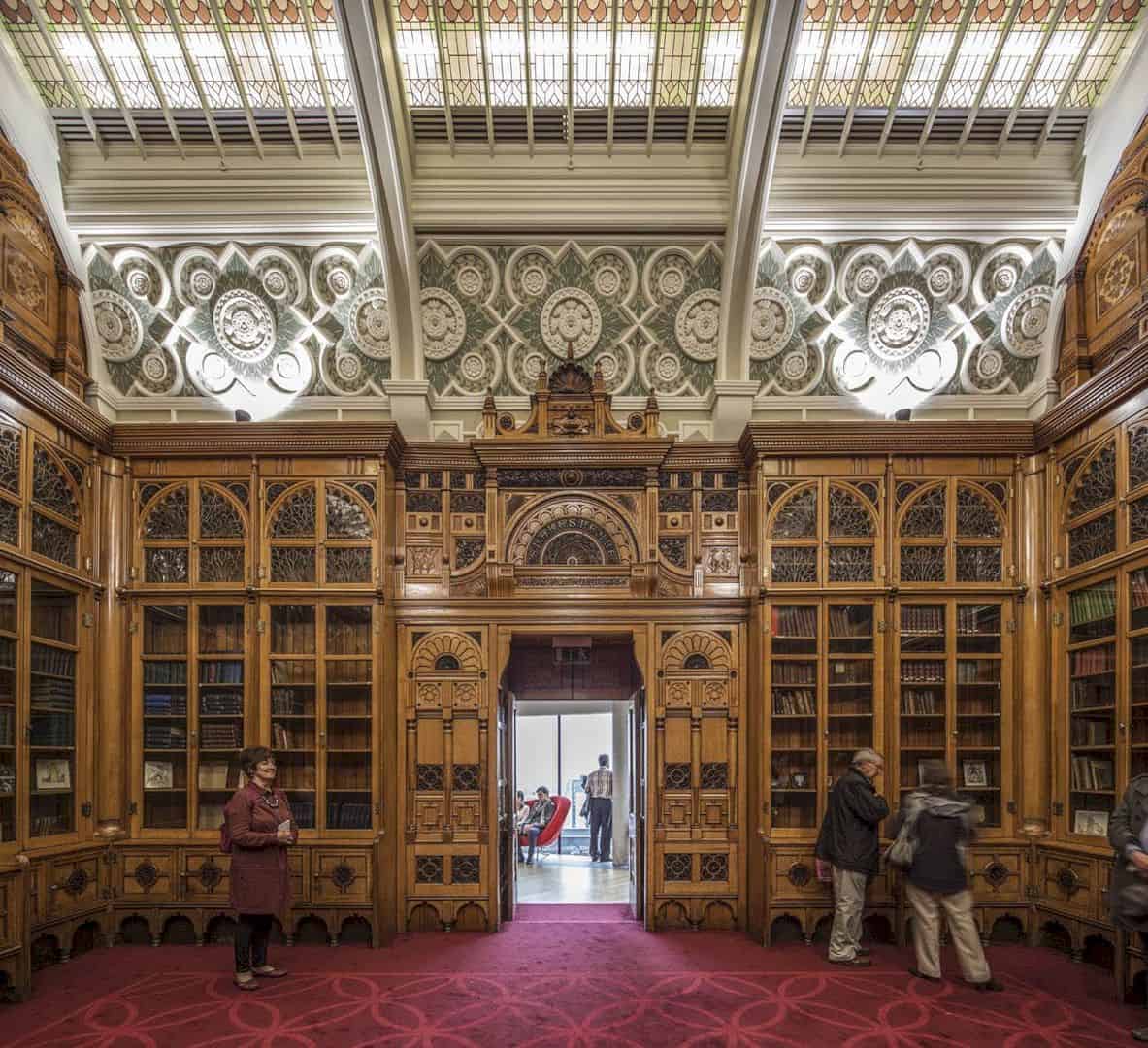
Meanwhile, the rooftop rotunda houses the Shakespeare Memorial Room designed in 1882. This Victorian-inspired reading room was formerly a part of Birmingham’s first Central Library.
Via Mecanoo
Discover more from Futurist Architecture
Subscribe to get the latest posts sent to your email.
